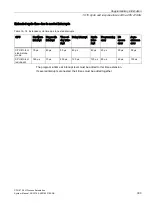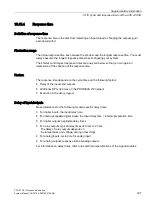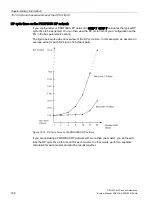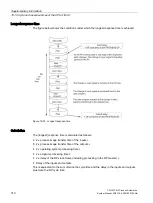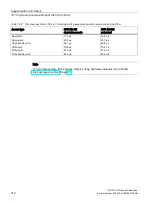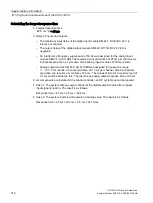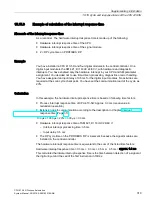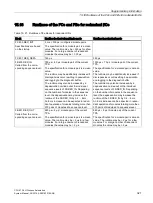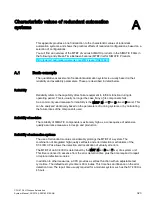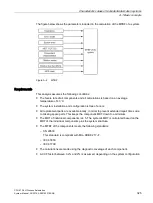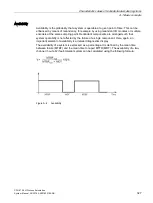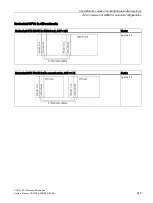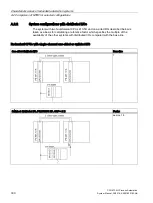
Supplementary information
15.15 Cycle and response times of the CPU 410-5H
CPU 410-5H Process Automation
System Manual, 09/2014, A5E31622160-AB
317
15.15.7
Interrupt response time
Definition of interrupt response time
The interrupt response time is the time from the first occurrence of an interrupt signal to the
call of the first instruction in the interrupt OB.
General rule: Higher priority interrupts are handled first. This means the interrupt response
time is increased by the program execution time of the higher-priority interrupt OBs, and by
previous interrupt OBs of the same priority which have not yet been processed (queue).
Note that any update of the standby CPU extends the interrupt response time.
Calculating the interrupt response time
Minimum interrupt response time of the CPU
+ minimum interrupt response time of the
signal modules
+ cycle time on PROFIBUS DP or PROFINET IO
= Shortest interrupt response time
Minimum interrupt response time of the CPU
+ maximum interrupt response time of the
signal modules
+ 2 * cycle time on PROFIBUS DP or PROFINET IO
= Longest interrupt response time
Hardware and diagnostic interrupt response times of the CPUs
Table 15- 19 Hardware and interrupt response times; maximum interrupt response time without com-
munication
CPU
Hardware interrupt response
times
Diagnostic interrupt response
times
min.
max.
min.
max.
CPU 410-5H stand-alone mode 60 µs
90 µs
60 µs
90 µs
CPU 410-5H redundant
140 µs
310 µs
120 µs
250 µs
Increasing the maximum interrupt response time with communication
The maximum interrupt response time is extended when the communication functions are
active. The additional time is calculated using the following formula:
CPU 410-5H t
v
= 100 µs + 1000 µs × n%, significant extension possible
where n = cycle load due to communication

